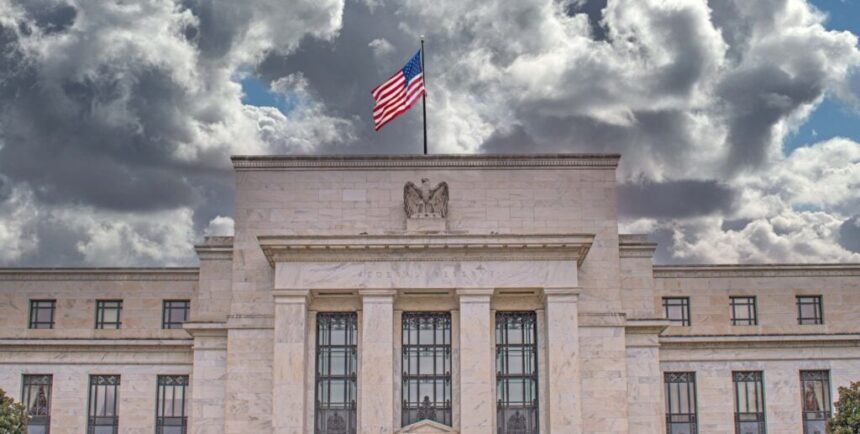In a recent economic outlook by Morningstar, the housing market affordability is currently mimicking the peak of the housing bubble in 2006. This similarity is due to a combination of mortgage rate hikes, rising home prices, and income levels.
In light of this, Morningstar suggests that falling mortgage rates will play a vital role in improving housing affordability by 2025. Here, we’ll shed some light on the various factors that are making an impact on mortgage rates and what it will mean for American real estate investors.
Why Morningstar Believes Rates Will Fall by 2025
It wasn’t so long ago (back in October 2022) that we saw mortgage rates reach 7%, the highest in over two decades. This was in part due to the Federal Reserve’s attempt to slow down spending and tame inflation. However, this has been proven to be more challenging, as the U.S. economy has been quite resilient to the rapid rate hikes.
On the bright side, Morningstar’s housing report predicts mortgage rates declining over the second half of this year. They anticipate an average rate of 6.25% for 2023. This will be followed by further decreases to 5.00% in 2024 and 4.00% in 2025.
The report mentions that the Fed will aggressively lower interest rates in the coming years. As inflation is tamed, the priority will shift to restoring economic growth, requiring lower interest rates.
When it comes to the mortgage rate forecast, Morningstar is leaning toward the low side compared to other forecasters. The Mortgage Bankers Association and Fannie Mae expect rates at 4.9% and 5.6% by the end of 2023, respectively. Moody’s Analytics foresees a gradual decline to 6% by late 2024 and a further decrease to 5.5% by the end of 2025.
The economists at Morningstar’s take: “Our long-term interest-rate projections are driven by secular trends. Factors such as aging demographics, slowing productivity growth, and increasing inequality have acted to push down real interest rates for decades, and these forces haven’t gone away.”
Furthermore, Morningstar anticipates two additional factors contributing to improved housing affordability: rising incomes and falling home prices. They predict a “mild correction” in home prices, with new and existing home prices decreasing by 6% and 4%, respectively, from 2022 through 2024. With the limited inventory of existing homes for sale, it is expected to avert a larger decline in home prices.
Meanwhile, Morningstar is taking a bearish stance on home prices. On the other hand, Zillow and CoreLogic anticipate national house prices to rise by 5.0% and 4.6%, respectively, over the next 12 months. And Moody’s Analytics expects a peak-to-trough decrease of approximately 8% for national house prices.
What’s The Probability That Rates Will Begin to Drop in 2024?
Federal rates could start declining by next year. According to a machine-learning model created by Vanguard, they predict that this may happen starting in mid-2024.
What’s the reason behind this? Well, inflation needs to be calmed, and the Fed is looking at other factors, like the rise in unemployment rates, in order to begin putting the brakes on interest rates.
“Vanguard’s model uses 25 inputs in four broad categories—inflation, labor market, financial conditions, and global commodities—to produce probabilities for the direction of Fed moves in the near future,” explains Boyu (Daniel) Wu, a Vanguard senior investment strategist.

Although these predictions aren’t guaranteed, the model has shown to be accurate 80% of the time in forecasting the moves that the Fed will make.
According to Asawari Sathe, a Vanguard senior economist, it’s unlikely that the economy will be far worse than expected and for the Fed to start lowering interest rates sooner than anticipated.
For now, this model helps to determine the likelihood of different scenarios playing out so real estate investors can be prepared for what’s to come.
A Perfect Storm is Needed to Ease Housing Affordability
Morningstar’s optimistic outlook suggests that falling mortgage rates, coupled with rising incomes and a possible mild correction in home prices, will contribute to improved housing affordability in the future. In contrast, other forecasters are underlining the economic uncertainty and challenge of making accurate predictions. This upbeat forecast will be a welcome relief for real estate investors to hear, as there may be a silver lining within the coming years.
Find an Agent in Minutes
Match with an investor-friendly agent who can help you find, analyze, and close your next deal.
Note By BiggerPockets: These are opinions written by the author and do not necessarily represent the opinions of BiggerPockets.









